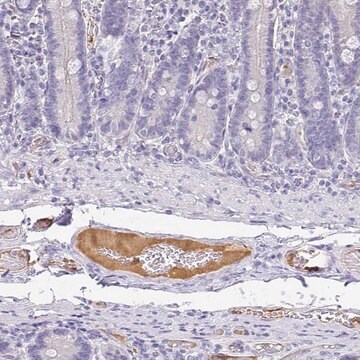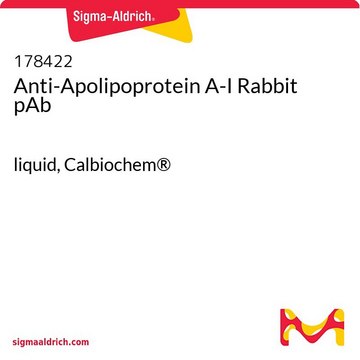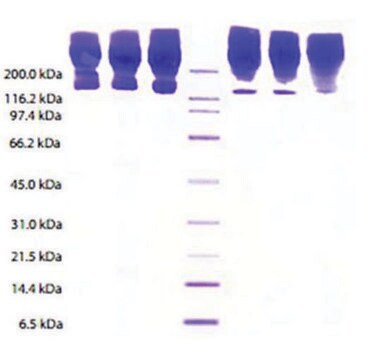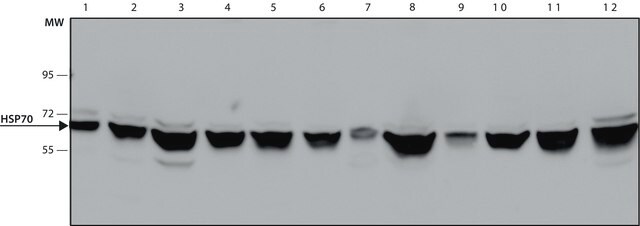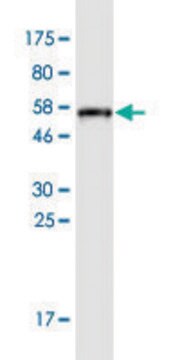MABS2046
Anti-ApoB Antibody, clone 2G11
clone 2G11, from mouse
Sinónimos:
Apolipoprotein B-100
About This Item
Productos recomendados
origen biológico
mouse
Nivel de calidad
forma del anticuerpo
purified immunoglobulin
tipo de anticuerpo
primary antibodies
clon
2G11, monoclonal
reactividad de especies
hamster, mouse, rat
no debe reaccionar con
human
envase
antibody small pack of 25 μg
técnicas
ELISA: suitable
western blot: suitable
isotipo
IgG1κ
Nº de acceso NCBI
Nº de acceso UniProt
Condiciones de envío
ambient
modificación del objetivo postraduccional
unmodified
Información sobre el gen
mouse ... Apob(238055)
Descripción general
Especificidad
Inmunógeno
Aplicación
Signaling
Western Blotting Analysis: A representative lot detected ApoB in Western Blotting applications (Nguyen, A.T., et. al. (2006). Biochem Biophys Acta. 1761(2):182-5; Cheng, D., et. al. (2016). J Biol Chem. 291(45):23793-23803).
ELISA Analysis: A representative lot detected ApoB in ELISA applications (Nguyen, A.T., et. al. (2006). Biochem Biophys Acta. 1761(2):182-5).
Calidad
Western Blotting Analysis: 4 µg/mL of this antibody detected ApoB in 10 µg of rat serum.
Descripción de destino
Forma física
Almacenamiento y estabilidad
Otras notas
Cláusula de descargo de responsabilidad
¿No encuentra el producto adecuado?
Pruebe nuestro Herramienta de selección de productos.
Código de clase de almacenamiento
12 - Non Combustible Liquids
Clase de riesgo para el agua (WGK)
WGK 1
Punto de inflamabilidad (°F)
does not flash
Punto de inflamabilidad (°C)
does not flash
Certificados de análisis (COA)
Busque Certificados de análisis (COA) introduciendo el número de lote del producto. Los números de lote se encuentran en la etiqueta del producto después de las palabras «Lot» o «Batch»
¿Ya tiene este producto?
Encuentre la documentación para los productos que ha comprado recientemente en la Biblioteca de documentos.
Nuestro equipo de científicos tiene experiencia en todas las áreas de investigación: Ciencias de la vida, Ciencia de los materiales, Síntesis química, Cromatografía, Analítica y muchas otras.
Póngase en contacto con el Servicio técnico



